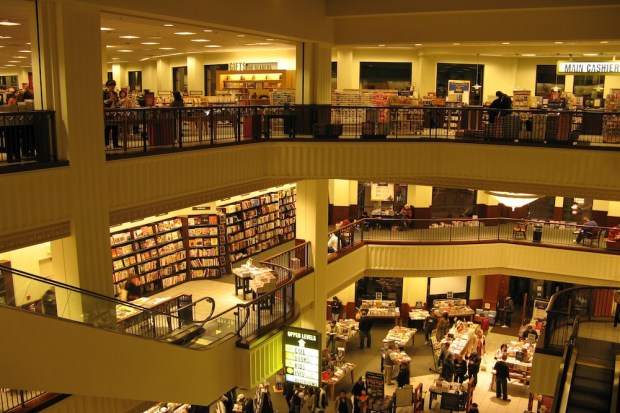Goods News For Barnes & Noble. No, Really

For the last several years Barnes & Noble has faced a world of people looking forward to writing their obituary.
Once the resident powerhouse in U.S book sales, Barnes & Noble has spent the better part of the last decade doing what a lot of big box stores have spent the last decade doing: watching Amazon slowly but surely eat up their market share. And their attempts to compete as a digital player with their own answer to the Kindle (the Nook) haven’t worked as planned. Though B&N enjoyed some initial success competing in eBooks, the Nook by 2015 was more an anchor on the firm than a revenue generator.
In short, the story has not been pretty.
But despite the aesthetics over the last several years and analysts writing things like “Barnes & Noble: The company that is dead but doesn’t know it yet,” or the most succinct “Why B&N is a zombie company,” Barnes & Noble is not ready to go anywhere yet and is determined to battle back the predictions of its rapidly onsetting mortality.
And so, as PYMNTS reported in late 2015 , Barnes & Noble spent the back half of 2015 on the offensive with an assist from Leonard Riggio, the CEO who grew Barnes & Noble from a small New York-based chain into one of the driving forces in book sales in the U.S. and around the world. Because the executive team at B&N thinks they know something that their critics do not — that shopping is not just the act of acquiring goods or services — it can also be an experience for customers. And whatever its other issues, B&N’s execs point that out with its sights on coffee shops, story times for children and a large swath of interactive stations — the have been in the good consumer experience business since long before experience was the “it” world for physical commerce.
And, shockingly, it looks like that just might be paying off for Barnes & Noble, such that those enthused obituary writers just might need to holster their pens for quite a while more.
So what’s happening?
As most people with working Internet connections or access to cable news already know, the killing fields on the U.S. stock market kicked off this week, taking down such notable luminaries as Google, Apple and even the unstoppable Amazon by quite a few pegs. Apple is, as of the writing of this story, struggling with its lowest stock price in 15 months.
Not effected by the great sell-off that started Monday? Barnes & Noble, which despite taking a 61 hit to its share price in the last 12 months (and thus a firm one might think would have been heading for more pain in a weak market), didn’t fall on Monday, in fact it gained ground and picked up its stock price 5 percent. And all of a sudden analysts are taking a new and more nuanced look at B&N, sticking a 52-week price target of $17.50 on the stock, almost double its current value.
Why all the love?
Heading into the holiday shopping rush, while same store sales were falling nationwide, Barnes & Noble saw an increase of 1.1 percent — and most analysts think that the earnings report due out later today will reflect some pretty significant sales gains.
“People come out to stores because we have consistently provided the best possible experience for our customers and their families,” a spokesperson told us. “And the results we are seeing indicate that this is what is drawing our customers in.”
Apart from improved sales — the bookseller has also scaled back its store closure plans, shuttering 10 stores in 2016, as opposed to the 13 initially announced. Plus analysts think 10 still represents an overestimation on B&N’s part — and total closures might only amount to about 7 stores this year.
Barnes & Noble is, of course, not out of the woods, as it faces an extremely powerful problem in the shape of Amazon — a giant with a $320 market value to B&N’s $700 million market valuation. David and Goliath indeed.
But Amazon thinks it can small work for them, as they provide a hub for discovery that Amazon simply cannot.
“Amazon is great if you know what you want to buy,” noted one B&N investor as to why he believes Barnes & Noble has a lot more life left in it than most give it credit for.
So what will the keys be?
Small stores are a popular solution.
“Their biggest problem obviously is that their stores are very big,” the investor noted. “Their average size is about 26,000 square feet. So, how do you have a store that offers tremendous choices of books yet isn’t too large?”
That mystery remains to be solved.
